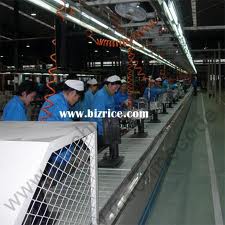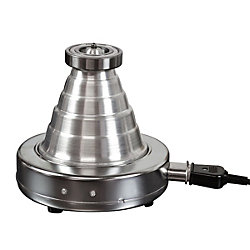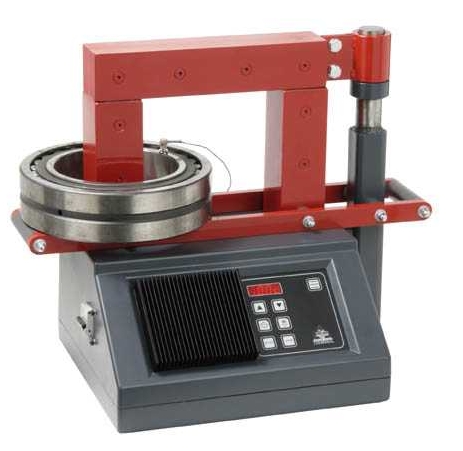That picture looks like
Chinese workers assembling gum ball machines,or perhaps koolaid machines.
In all seriousness,I would like to know how the Japanese do it,or did it at the yamaha factory.
A puller works good too, but....
People have been heating AND cooling bearings for installation since bearings were probably invented.
Both methods look like they work well. I really like how the "heated inner race" method works. We use to have "Bearing heaters at the old shop that heated the inner race before installation just like ken dose,and it always worked perfectly.
It was a coned shaped arangement that the bearing would sit on,and you would swipe it with a "heat crayon" that told you when the proper temperature was reached on the inner race of the bearing. After the bearing's inner race hit the correct temperature,you then slid it on the shaft.
Ken's method is PERFECTLY ACCEPTABLE and makes assembly a simple "No brainer". Good stuff in them video's Ken. I wish I had better lighting and a bigger SD card,so I could do longer video's. I'm working on it though.
This is what is said about the Cone style bearing heater...
Proper bearing installation is essential to safeguard maximum bearing life. “Maintenance World” estimates that 27% of bearing failures can be attributed to improper installation and mounting errors. By heating the inner race to ~250°F prior to installation, the user allows the bearing to expand and slide easily onto the shaft.
Today, thousands of Cone MountTM Bearing Heaters are in use worldwide promoting bearing longevity, reducing downtime, and lowering maintenance costs. Our product(s) are simple, efficient, American made alternatives to larger more expensive induction bearing heaters.
Customer satisfaction is our primary concern. All units come with a simple instruction sheet, a 250°F temperature indicating "crayon", and a one-year warranty.
The above statement applys to ken's method.
This should help dispel any doubts about heating a bearing for installation,and any damage it will cause (NONE) when done properly at the correct and proper temperature. No brinelling will occure.
This method is used EVERY DAY in industry,because it does the job properly and efficiently.
I've used this method myself and can say that it works!
As for brinelling,it most commonly occures with high rpm's,coupled with LOTS of heat,and no lubrication.
Cone style bearing heater looks like this...
Here's a video of a "cone bearing heater" in action...
http://www.directindustry.com/prod/...n-heaters-for-bearing-18443-861179.html#video
There is also the "Induction type" bearing heater that looks like this...
Here's a video of an "Induction bearing heater" in action...
http://www.directindustry.com/prod/...n-heaters-for-bearing-19092-576590.html#video


